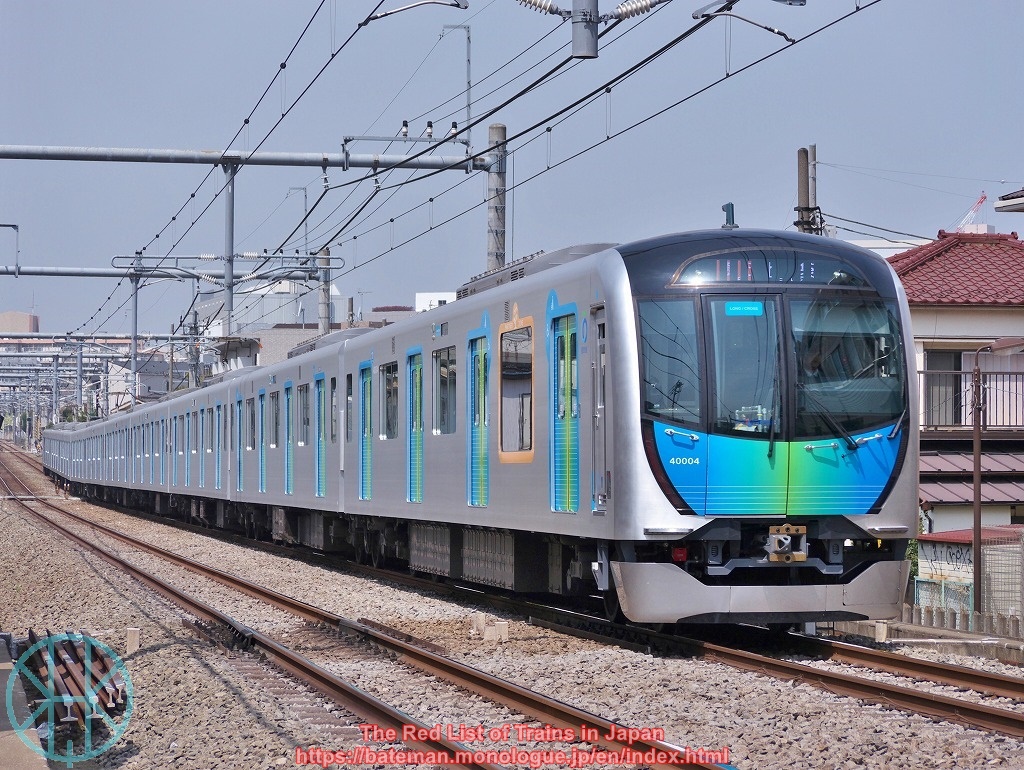Seibu 40000 series

Data (as of 29 Nov 2025)
| Status: | Least Concern |
| Constructed in: | 2016- |
| Number built: | 240 |
| Registered: | 240 |
History
The 40000 series was introduced in advance of commencing S-Train services (Kotesashi - Toyosu on weekdays, Seibu-Chichibu - Motomachi Chukagai at weekends), as well as to replace 9000 series on Ikebukuro Line. There are two groups: "dual-seat" units and "long-seat" trainsets, but both are formed of ten coaches and can be used for through-services towards Tokyo Metro Fukutoshin, Yurakucho, Tokyu Toyoko and Minatomirai Lines.
The "dual-seat" trainsets are used on both Seibu Shinjuku and Ikebukuro Lines. They have convertible seating (longitudinal to transverse seating and vice versa), accessible toilets and power outlets for passengers. It is not well known that the outlets can be used even when seats are set to longitudinal-position. Seats are set to transverse-position when used on S-Train or Haijima Liner (Seibu-Shinjuku - Haijima), but they are not as comfortable as other limited express services on Seibu lines (001 series and 10000 series).
The "long-seat" trainsets are allocated to Ikebukuro Line, and mainly used on through-services to Tokyo Metro lines and even towards Yokohama as mentioned above, along with 6000 series.
Current Operations & Future Prospects
Six "dual-seat" trainsets are mainly used on S-Train and Haijima Liner, with a few on other services in accordance with fixed timetables. S-Train at weekend (Seibu-Chichibu - Motomachi Chukagai via Tokyo Metro Fukutoshin, Tokyu Toyoko and Minatomirai Lines) is disproportionately expensive in spite of journey times and comfortability, attracting far lower passengers than initially anticipated.
Other "long-seat" trainsets are used for ordinary services on Ikebukuro Line and the through-services, as well as Shinjuku Line. They do not require any additional ticket.
